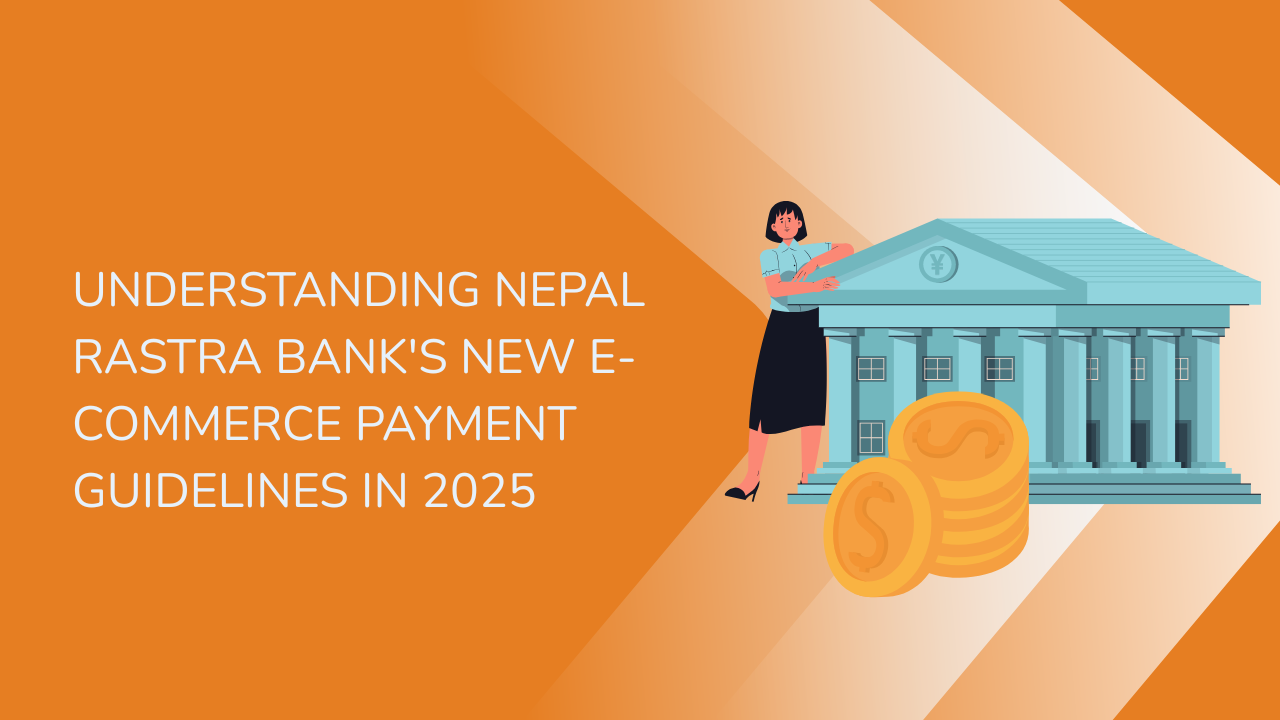Share this Article
Establishing a robust and distinctive brand identity is one of the most vital steps in launching a successful e-commerce store, especially in a rapidly growing market like Nepal. A well-defined brand identity not only helps you stand out among the competition but also creates a lasting relationship with your customers. The importance of brand identity cannot be overstated; it is the foundation for how customers perceive your business and their overall experience with it.
In Nepal, the e-commerce industry has experienced tremendous growth, but it is also highly competitive. For businesses to thrive in this market, having a unique brand identity is crucial. It helps customers differentiate your store from others, trust your offerings, and build brand loyalty. In this guide, we will walk through the key steps to help you build a powerful brand identity for your e-commerce store in Nepal.
1. Understand Your Target Audience
The first step in building a strong brand identity for your e-commerce store is understanding your target audience. Without a clear understanding of your customers, it becomes challenging to create a brand that resonates with them.
How to Understand Your Audience:
Conducting Market Research
Start by conducting thorough market research. Research allows you to understand the characteristics, preferences, behaviors, and needs of the audience you aim to target. In Nepal, the e-commerce demographic varies widely, with rural and urban consumers showing different purchasing behaviors. For instance, consumers in urban areas might be more inclined towards tech products, while rural consumers might focus more on daily essentials, clothing, or traditional items. Identifying these nuances will help you target the right audience.
There are several ways to conduct market research:
- Surveys and Questionnaires: Create surveys to collect direct feedback from your potential customers. Surveys can help you understand what types of products your target audience desires, their purchasing power, and what influences their buying decisions.
- Social Media Insights: Social media platforms such as Facebook, Instagram, and Twitter offer great tools to analyze consumer preferences. The insights you gain from social media engagement can help you tailor your brand’s message to meet your audience's expectations.
- Google Analytics: If you already have a website, Google Analytics provides valuable information about who is visiting your site, their interests, location, and how they found your site.
Creating Customer Personas
Based on the insights gathered, create detailed customer personas that represent your ideal customers. A customer persona is a fictional character that represents your ideal customer, and it should be built around specific demographic and psychographic data. For example, a persona might represent a 25-year-old urban professional who enjoys shopping for tech gadgets and is willing to pay a premium for convenience.
Knowing these personas allows you to tailor your marketing efforts, product offerings, and communication strategies to appeal to specific segments of your audience.
Competitor Analysis
To gain an even deeper understanding of your target audience, analyze your competitors. Review the strategies of other e-commerce businesses in Nepal that cater to similar customer demographics. Identify what these brands are doing well and where they are falling short. This analysis will not only help you better understand your audience's preferences but will also help you position your brand effectively in the marketplace.
2. Define Your Brand’s Mission, Vision, and Values
A strong brand identity is built on clarity about what your brand stands for. Establishing your brand’s mission, vision, and values is crucial because they guide all your branding and marketing efforts. Your mission outlines why your store exists, your vision defines where you want your store to be in the future, and your values reflect the principles that guide your decisions and actions.
Crafting Your Brand’s Mission, Vision, and Values:
Mission Statement
Your mission statement defines the core purpose of your e-commerce store. It answers the fundamental question: "Why does your business exist?" A well-written mission statement should be concise, clear, and focused on your store's primary goal.
For instance, if you are running a fashion e-commerce business, your mission might be: "To provide trendy and affordable clothing for every Nepali, ensuring convenience and accessibility for fashion-forward individuals." This mission communicates your brand’s main purpose and shows customers what they can expect from your store.
Vision Statement
A vision statement focuses on where you want your e-commerce business to be in the future. It should inspire your team and customers by providing a sense of direction and purpose.
For example: “To become the most trusted e-commerce platform in Nepal, known for its excellent customer service and extensive range of high-quality products.” This vision statement sets a clear and ambitious goal for your brand to strive toward.
Core Values
Your core values are the guiding principles that shape how your brand interacts with customers, employees, and the community. These values should align with your mission and vision. For instance, if your e-commerce store focuses on sustainability, one of your core values might be “Commitment to Environmental Responsibility.”
By defining your core values, you build trust with your customers and establish a strong moral compass for your brand.
3. Design a Memorable Logo and Visual Identity
The visual identity of your brand plays an integral role in creating a lasting impression on your customers. A strong logo and cohesive visual elements help establish recognition and communicate your brand's personality.
Creating Your Brand’s Visual Identity:
Designing a Unique Logo
Your logo is the most visible representation of your brand. It should reflect your brand’s essence while being simple, memorable, and adaptable across various platforms. The logo should be versatile enough to look good on a website, social media, or printed materials.
For example, a logo for a Nepali e-commerce store focusing on ethnic clothing might include traditional symbols or colors that evoke a sense of heritage. The logo should also be scalable and effective in both color and black-and-white formats.
Choosing Your Brand’s Color Palette
Color is a powerful tool in branding, as it can evoke emotions and associations. Different colors have psychological associations, so selecting the right colors is essential for conveying your brand's values. For example:
- Red: Often associated with passion, energy, and urgency.
- Blue: Conveys trust, dependability, and professionalism.
- Green: Associated with health, wellness, and sustainability.
For an e-commerce store in Nepal, where consumers may value family, community, and tradition, a color palette that blends modern and traditional tones could appeal to a broad audience.
Typography
Fonts are another important aspect of your visual identity. The typefaces you choose for your website, logo, and marketing materials should reflect your brand’s personality. A high-end luxury brand may use sleek, modern fonts, while a playful, youthful brand may choose more casual, handwritten-style fonts.
Brand Imagery
Imagery plays an essential role in communicating your brand message. Whether it’s lifestyle images, product photos, or promotional graphics, it’s important that the imagery aligns with your overall visual identity. High-quality product images that showcase your products in use will help customers connect with your brand on a personal level.
4. Establish a Consistent Brand Voice
Your brand’s voice is how you communicate with your customers across all touchpoints, from your website copy to customer service interactions. It should reflect your brand’s personality, values, and tone. A consistent brand voice is crucial in building trust and establishing a relationship with your audience.
Creating a Brand Voice and Messaging:
Tone of Voice
The tone of voice should match your target audience and your brand’s identity. For instance, a brand targeting a younger, trendy demographic might use a more casual and fun tone, while a professional B2B e-commerce store might adopt a formal, authoritative tone.
Messaging Consistency
Every communication, whether it's a social media post, an email, or a product description, should reflect your brand’s voice. Consistency in messaging helps customers feel that they are interacting with a cohesive, reliable brand. If your brand is built on a commitment to sustainability, ensure that this message is consistently communicated throughout all content.
Tagline and Slogans
A tagline is a short phrase that captures your brand’s essence. For example, “Bringing Nepal’s best to your doorstep” could be an effective tagline for a Nepali e-commerce store that prides itself on providing high-quality local products.
A good tagline should be memorable, meaningful, and align with your brand’s mission and values.
5. Ensure a Seamless User Experience (UX)
The user experience on your website plays a significant role in how customers perceive your brand. A seamless, easy-to-navigate website can elevate your brand, while a slow, frustrating site can create a negative impression and drive potential customers away.
Optimizing Your E-commerce Website for UX:
Navigation and Structure
Your website should be user-friendly and easy to navigate. Organize products into categories that make sense for your customers, use filters to help customers find what they need, and ensure that your search functionality is intuitive. A confusing website can turn customers away before they even see your products.
Mobile Optimization
In Nepal, mobile commerce is on the rise. Ensuring that your website is mobile-optimized is crucial for reaching a broader audience. A mobile-friendly website adjusts to various screen sizes and provides a smooth, enjoyable shopping experience for users on the go.
Website Speed
A slow website can drive customers away and hurt your search engine rankings. Customers expect pages to load quickly, especially when shopping online. Optimize your website’s speed by compressing images, reducing unnecessary scripts, and choosing a reliable hosting provider.
Simplified Checkout Process
A complicated checkout process can lead to cart abandonment. Simplify the process by minimizing the number of steps required to complete a purchase. Offer multiple payment options, such as cash on delivery, digital wallets, and credit/debit cards, to cater to different customer preferences.
6. Build Customer Loyalty with Exceptional Service
Your brand’s identity is also built on how well you treat your customers. Exceptional customer service can turn one-time buyers into loyal customers who return to your store again and again.
Creating a Strong Customer Service Foundation:
Responsive Communication
Be quick and helpful in responding to customer inquiries Whether through email, live chat, or social media, ensure that your responses are timely, polite, and informative.
Loyalty Programs and Discounts
Encourage repeat business by offering rewards and loyalty programs. For example, offer discounts or exclusive deals for returning customers. A customer loyalty program can strengthen brand loyalty and encourage customers to choose your store over competitors.
Easy Returns and Refunds
Customers appreciate an easy and transparent return and refund policy. It gives them confidence when purchasing from your store, knowing they can return products if needed.
7. Consistently Promote Your Brand Across Channels
Once your brand identity is established, the next step is to promote it consistently across all marketing channels. This helps ensure that your brand message reaches a wide audience and stays top of mind for potential customers.
Using Multiple Channels to Reach Your Audience:
Social Media Marketing
Social media platforms such as Facebook, Instagram, and TikTok are powerful tools for promoting your e-commerce store. Regularly share content that aligns with your brand’s identity, such as product updates, behind-the-scenes content, and customer testimonials.
Email Marketing
Email marketing allows you to stay connected with customers and send personalized offers and recommendations. Build an email list and use it to nurture customer relationships, share promotions, and update customers on new arrivals.
Influencer and Affiliate Marketing
Partner with influencers and affiliates who align with your brand values to extend your reach. Influencers in Nepal who have a strong following can help boost your brand’s credibility and attract new customers.
Conclusion
Building a strong brand identity for your e-commerce store in Nepal requires careful planning, dedication, and consistency. By understanding your target audience, defining your mission, and crafting a cohesive visual and messaging strategy, you can create a brand that resonates with customers and stands out in a competitive market.
Categories:
E-commerce Tips & Tutorials
,
Marketing & Growth
,
SEO & Content Marketing
,
Beginner’s Guides
,
Sales & Conversion
,
Success Stories & Case Studies
Tags:
Online Store in Nepal
,
5 Simple Steps
,
local businesses
,
e-commerce app
,
Small Business
,
strong brand
,
E-commerce
,
Role of Social Media
,
Growing sales
,
strategies
,
Social media
,
Logistics
,
Delivery Networks






